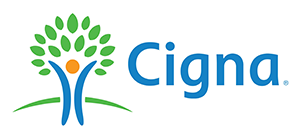
When the acronym AAC is mentioned, there may be many questions that arise as to what it is, why it’s being used, and how it can be helpful.
Augmentative and assistive communication (AAC) can be defined as an alternative form of communication. It’s implemented when an individual has difficulty communicating their wants and needs verbally. The specific form of AAC used for an individual is recommended and selected by a skilled professional, a Speech-Language Pathologist (SLP), who is knowledgeable in language development as well as understands the different AAC options. Other professionals involved in selecting the appropriate AAC include occupational therapists and physical therapists. When choosing a specific option, the decision can and should be a team approach when necessary.
The team approach is important when choosing AAC as every individual presents with different skills and abilities. Speech-language pathologists provide knowledge based on language development, both receptively and expressively. Occupational therapists will provide guidance based on fine motor skills, eye gaze, and posture. Physical therapists will provide recommendations for AAC systems based on gross motor skills.
There are many different versions of AAC including low-tech and high-tech. Low-tech versions include and are not limited to PECS (picture exchange communication system), spelling words by pointing to letters, writing, and drawing. High-tech versions include using an iPad or tablet with a specific program downloaded or a speech-generating device. An individual using AAC can move from using a low-tech to a high-tech system as skills continue to develop.
Implementing specific versions of AAC is important when the individual is ready. They must have foundational skills including an interest in communication, cause and effect skills, a desire to engage with people or objects, and an understanding of language (receptive language skills). For example, if an individual wanted to make a request for a ball, we would want them to have the desire to play with the ball, request the ball, and understand the name of the object is a ball. AAC systems can be adapted to the individual as you can include specific words, people, and places they enjoy!
There are many misconceptions about the use of AAC. These include but are not limited to the following: prevents or slows down verbal communication, should be used as a last resort, is only used for non-verbal individuals, and is only used for requesting. AAC continues to be supported by research as it has been proven to not only support an individual’s communication interactions but enhance their quality of life as they are able to communicate their wants, needs, thoughts, and ideas.
If you would like more resources for AAC, you can visit the American Speech-Language-Hearing Association for more information. If you are concerned or feel as if your child may benefit from an AAC system, please contact our office to receive an evaluation from a Speech-Language Pathologist.









